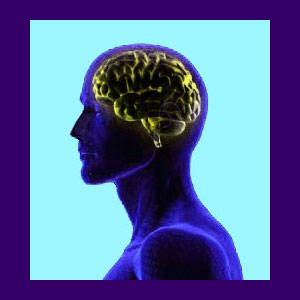
Migraine headaches are a very severe chronic health condition which can make life a living hell for suffering patients. Migraine is a word that comes from the Greek term hemicrania, literally meaning half the head. Migraines are far more common in adult women than men by a ratio of 3 to 1.
There is considerable debate about the actual causes of migraines, with many possible theories gaining then losing popularity at any given time. One thing is for sure, migraines are a debilitating condition which can make living a normal life a thing of the past.
Although studied intensively by neurologists and brain specialists, mainstream medical science is really not much further along in understanding why these horrific types of headaches occur.
Meanwhile, experts in mindbody medicine have not only isolated distinctive causes and mechanics for the pains to exist, but they have also developed effective nonpharmaceutical treatment strategies.
Symptoms of Migraines
Migraines are characterized by severe pain, especially in one or both sides of the head. They are commonly accompanied by a feeling a nausea or lightheadedness. Most patients experience extreme sensitivity to light and sound during the course of their headache. Movement, concentration and communication are impaired and almost any physical activity usually makes the pain far worse. Many patients also experience a visual phenomenon commonly called lights or aura just prior to suffering from a migraine. These lights are usually an indicator that a serious painful attack of head pain is about to begin.
Other common associated symptoms may occur prior to the migraine, during the pain or shortly after the resolution of the headache. The most common include: constipation, food cravings, emotional distress, anxiety, depression, excessive tiredness, muscle pain, malaise and listlessness. These are also symptoms which can be linked to a variety of psychological pain syndromes.
Origin of Migraine Headaches
Many theories on the true nature of migraines have been presented, but none have gained anything close to universal or even majority acceptance. Many doctors feel this is a vascular condition, which should be treated as any other disorder of the circulatory system. Other doctors believe that the cause lies in one of several anatomical control systems within the brain itself.
A popular theory states that migraines are a result of a neurological disorder in the brain known as cortical spreading depression. Still other doctors have linked the condition to many other general health and systemic concerns. Finally, some doctors accept that this condition has a psychological causation based in subconscious emotional repression or even conscious stress.
Treating Migraine Headaches
Migraines usually have a trigger mechanism, much in the same manner as acute back pain. Patients often experience an attack based upon some form of physical or emotional stimulus. Often, these events are similar to triggers bringing on other suspected psychosomatic conditions, such as allergies or depression. The trigger is most commonly a conditioned response which certainly makes little causative sense for a headache syndrome. This fact is yet another factor which supports the theory of a purely psychosomatic cause of some headache conditions.
I experienced severe headaches as a child until the age of 12 or so. These attacks often worked in tandem with my ultra-sensitive stomach. This was long before my back pain began at age 16. The funny thing is that the headaches completely disappeared during a time when my stomach became very bad.
Further down the line, my stomach became better (but not completely) when my back pain began. To me, it is now perfectly clear that all these symptoms are related. In my life, I suffered from many back pain substitute symptoms both before my actual dorsalgia even began and during the decades of suffering with it. I must admit that bad conscious stress can still give me a headache, same as anyone else. This is one of the most common and universal psychosomatic reactions to any emotional stress. However, now the pain is never that bad and goes away rather quickly.
When a headache comes on without provocation, I know there is some underlying repressed or suppressed emotion responsible. I search internally, find it, and the headache resolves. My headache experience is just additional proof that the mind and body interact constantly and that everything which occurs in the physical body is understood and influenced by the emotional mind.
Back Pain > Psychologically Induced Pain Syndromes > Migraine Headaches





